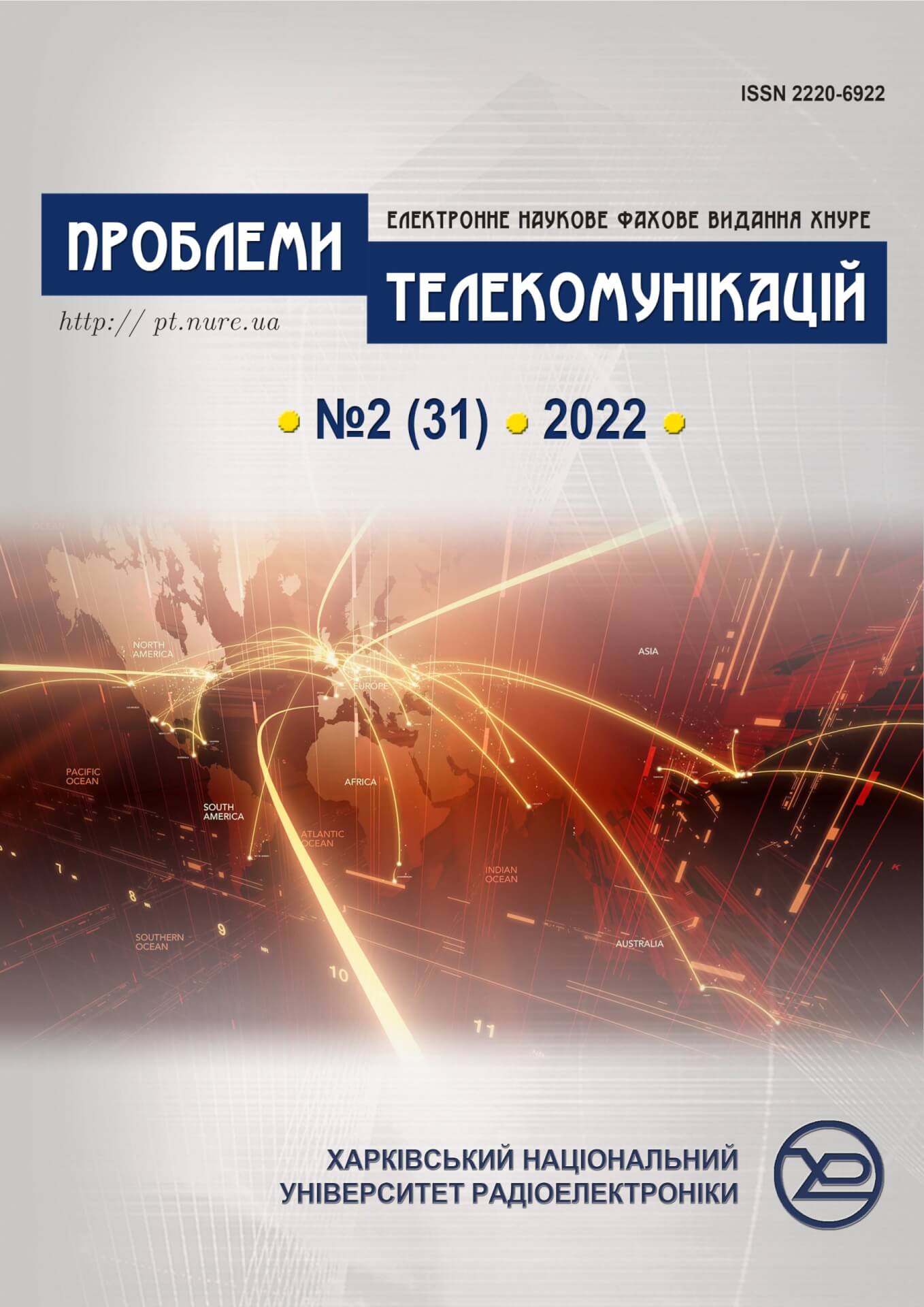Experimental studies of communication channel bandwidth of millimeter wave range indoors
DOI:
https://doi.org/10.30837/pt.2022.2.02Abstract
There is a rapid development of technologies worldwide that have access to the Internet, independently exchange data, and upload collected information to cloud storage. Every year, the amount of data transmitted from things and people on the Internet is approximately two zettabytes. The volume of data on the Internet is constantly growing. According to the Internet Live Stats service, more than 50,000 search queries are made on Google every second, 120,000 videos are viewed on YouTube, and almost 2.5 million e-mails are sent. Therefore, it is expedient to implement the fifth generation of communication, which will work in the millimeter range. Promising technologies for building 5G and its implementation include small base stations, which are analogs of conventional mobile network base stations. Within settlements, small base stations should be located short distances from each other (approximately 250 meters). From such parameters, it can be concluded that it will be necessary to use thousands of such stations to cover even a small city, forming a single network that will transmit data to 5G users. Among the advantages, it can be noted that due to the small size of the antennas, they can be placed on any elements of structures and buildings (for example, on the walls of buildings, pillars, etc.) without additional obstacles. The paper presents and investigates the bandwidth of the millimeter wave range indoor communication channel. The structure of the modem and the format of the control command, the dependence of the transmission speed C on the length of the radio line of the IEEE 802.11ad 60 GHz communication system in point-to-point mode (Indoor LOS) and (Indoor NLOS) are presented. In work, there are theoretical assessments of the achievable data transfer rates based on the bandwidth of the Shannon communication channel and practically possible data transfer rates for various segments of the information transfer network for the IEEE 802.11ad standard equipment using different modulation and coding schemes (MCS).
Downloads
Published
Issue
Section
License

This work is licensed under a Creative Commons Attribution-NonCommercial-ShareAlike 4.0 International License.
Authors who publish with this journal agree to the following terms:- Authors retain copyright and grant the journal right of first publication with the work simultaneously licensed under a Creative Commons Attribution License that allows others to share the work with an acknowledgment of the work's authorship and initial publication in this journal.
- Authors are able to enter into separate, additional contractual arrangements for the non-exclusive distribution of the journal's published version of the work (e.g., post it to an institutional repository or publish it in a book), with an acknowledgment of its initial publication in this journal.
- Authors are permitted and encouraged to post their work online (e.g., in institutional repositories or on their website) prior to and during the submission process, as it can lead to productive exchanges, as well as earlier and greater citation of published work (See The Effect of Open Access).

